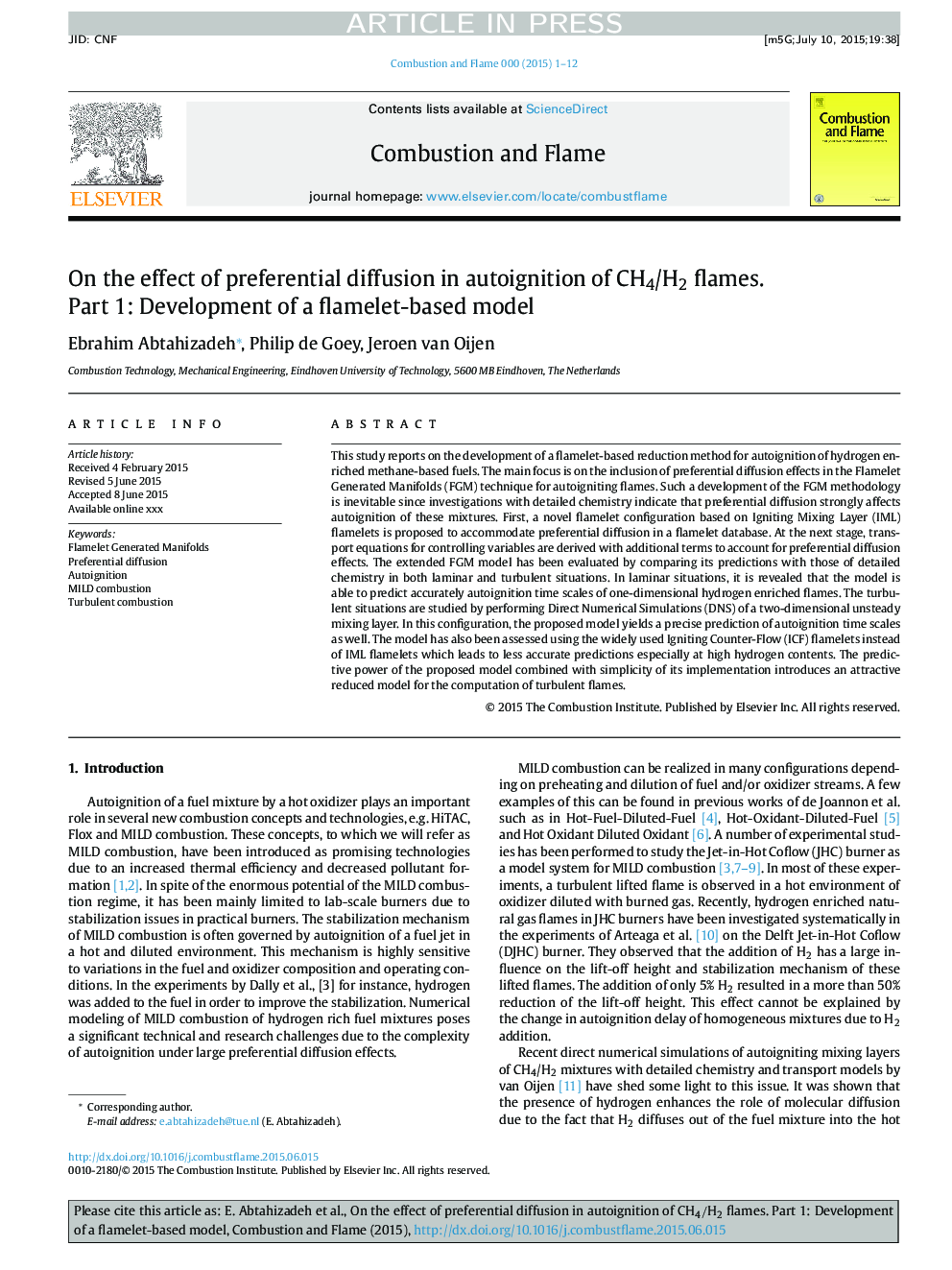| Article ID | Journal | Published Year | Pages | File Type |
|---|---|---|---|---|
| 10264376 | Combustion and Flame | 2015 | 12 Pages |
Abstract
This study reports on the development of a flamelet-based reduction method for autoignition of hydrogen enriched methane-based fuels. The main focus is on the inclusion of preferential diffusion effects in the Flamelet Generated Manifolds (FGM) technique for autoigniting flames. Such a development of the FGM methodology is inevitable since investigations with detailed chemistry indicate that preferential diffusion strongly affects autoignition of these mixtures. First, a novel flamelet configuration based on Igniting Mixing Layer (IML) flamelets is proposed to accommodate preferential diffusion in a flamelet database. At the next stage, transport equations for controlling variables are derived with additional terms to account for preferential diffusion effects. The extended FGM model has been evaluated by comparing its predictions with those of detailed chemistry in both laminar and turbulent situations. In laminar situations, it is revealed that the model is able to predict accurately autoignition time scales of one-dimensional hydrogen enriched flames. The turbulent situations are studied by performing Direct Numerical Simulations (DNS) of a two-dimensional unsteady mixing layer. In this configuration, the proposed model yields a precise prediction of autoignition time scales as well. The model has also been assessed using the widely used Igniting Counter-Flow (ICF) flamelets instead of IML flamelets which leads to less accurate predictions especially at high hydrogen contents. The predictive power of the proposed model combined with simplicity of its implementation introduces an attractive reduced model for the computation of turbulent flames.
Keywords
Related Topics
Physical Sciences and Engineering
Chemical Engineering
Chemical Engineering (General)
Authors
Ebrahim Abtahizadeh, Philip de Goey, Jeroen van Oijen,
